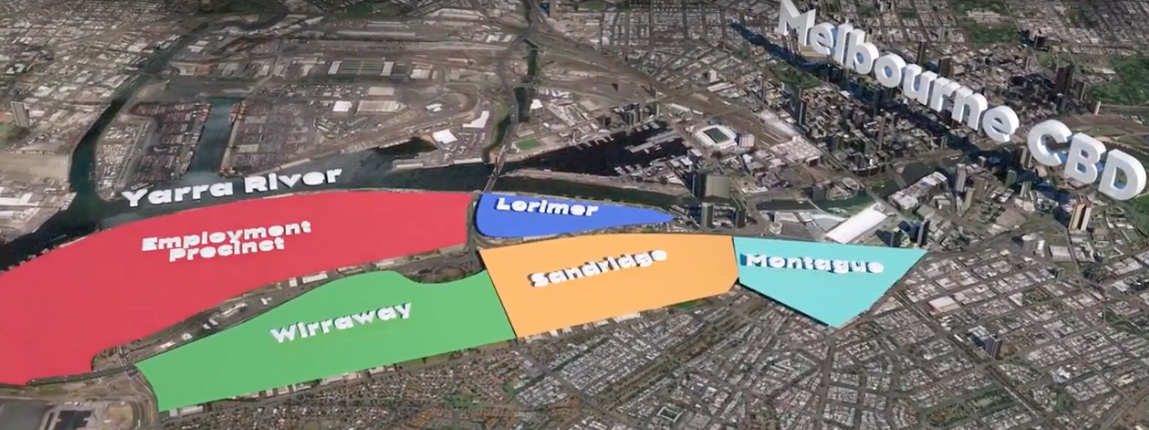Australia’s Largest Urban Renewal Area Targets Sustainability Initiatives
TUD+ MEMBER CONTENTThe Victorian Government have officially released the draft framework for the Fishermans Bend precinct development.
At 480 hectares and more than twice the size of the current CBD, Fishermans Bend is Australia's largest urban renewal site.
The government have targeted progressive sustainability principles for the development of Fishermans Bend -- with the draft framework indicating that the precinct will become Australia's largest Green Star community. The masterplanned development will factor in mass efficiencies in water, energy, construction and services, assisted by the early stage of the area's development.
Key initiatives include an emphasis on walking and cycling connections, public transport, doubling open-space to the equivalent of two-thirds the size of Docklands and a target of six per cent affordable housing.
The framework proposes discretionary height limits, overshadowing controls, a variation in street wall heights and floor area ratio that applies to all sites.
Related reading: Construction Under Way on Public Park in Fishermans Bend

The framework sets out "targets" under its vision for the area to 2050. The targets include 80 per cent of general trips and 90 per cent of school-related trips to be made via sustainable transport and a walkability score of 90 per cent.
Related reading: Opinion: Fishermans Bend a Best Practice Development for Melbourne’s Future
Principal of Melbourne-based economic and planning consultancy, Pollard Davies Consulting and editor of the Urbanist, Alan Davies points out that the walkability score should be easy to achieve because it's measured from ease of walkability not actual behaviour.
"Indeed, it’s reasonable to ask why the target isn’t higher, given Southbank and the CBD already score in the high 90s," Davies said.
Davies questions the frameworks proviso of an average of 0.5 cars per dwelling -- more than 18,000 parking spaces.
"That’s a lot of cars; it’s about double the number of vehicles recorded in satellite city Sunbury at the 2016 Census. There’s an obvious contradiction here; it will be very difficult, perhaps impossible, to achieve 80 per cent of residents’ trips via sustainable transport if on average every second apartment has a car.
Related reading: CostaFox Lodges Plans for 40-Storey Tower in Fisherman’s Bend Precinct
Most industry bodies have expressed their support of the framework because of what it represents – a significant area for job growth and increased density that will help address housing shortages, as well as craft a template for sustainable urban precincts.
Related reading: Gurner Plans 2200 Apartments At Newly Acquired Site
Victorian executive director Sally Capp said to attract major employers there will need to be mass transit options in Fishermans Bend.
"With Melbourne Metro 2 on the horizon, industry and government must collaborate to release value, rather than impose further taxes and charges.”
Capp also warned against burdensome planning restrictions that could stifle development and deter design innovation.














